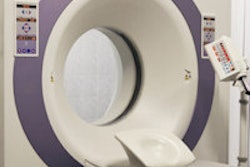Monday, December 1 | 3:00 p.m.-3:10 p.m. | SSE22-01 | Room S403B
Researchers from the U.S. National Institutes of Health (NIH) have developed software they believe could obviate the need for manual labeling of mediastinal lymph node stations.Clinicians routinely assess mediastinal lymph nodes and their stations for accurate staging, prognosis, choice of proper therapy, and follow-up examinations, according to co-author NIH staff scientist Jiamin Liu, PhD.
"In the current clinical workflow, radiologists and physicians have to detect enlarged lymph nodes, measure their size, and classify node stations by manually examining all slices of a CT scan," Liu told AuntMinnie.com. "This process can be very time-consuming and error-prone because annotations from different human observers vary significantly."
As a result, the group has proposed a system for automated lymph node detection and station labeling. The automated organ segmentation software segments multiple key anatomical structures within the mediastinum and detects lymph nodes. Following the International Association for the Study of Lung Cancer (IASLC) reference, the lymph node stations are determined according to their surrounding anatomical structures, Liu said.
"This system is fully automated without any user interaction," he said. "It may improve reproducibility and accuracy in the assessment of the mediastinum, a common site of disease in cancer patients."
To learn more about their method, stop by this Monday afternoon talk, which will be given by senior author Dr. Ronald Summers, PhD.




















